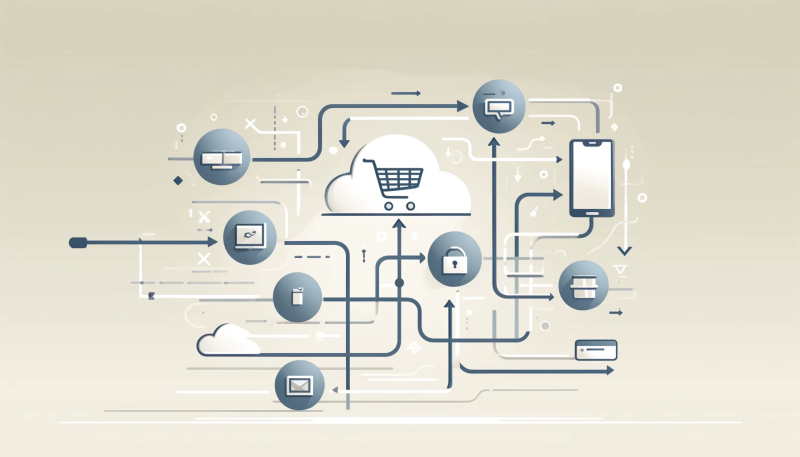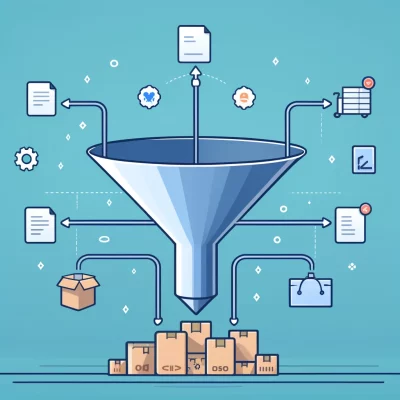In today’s competitive marketplace, it is crucial for food and beverage brands to effectively integrate multiple sales channels. This article serves as a comprehensive guide, offering valuable insights and strategies specifically tailored for CPG brands in the food and beverage industry. By streamlining the sales process and optimizing customer engagement across various platforms, brands can enhance their market reach and ultimately drive revenue growth. From managing raw materials to implementing successful marketing strategies, this guide presents best practices and real-world examples to empower brands in delivering high-quality products to customers worldwide.
Why Integrate Sales Channels
Integrating sales channels has become increasingly important for food and beverage brands in order to stay competitive in today’s market. By integrating various sales channels, businesses can reach a wider audience, increase brand visibility, and maximize revenue potential. In this article, we will explore the benefits and challenges of integrating sales channels, the importance of providing a seamless customer experience, and provide strategies for developing an effective sales integration strategy. Additionally, we will discuss the concept of building an omnichannel experience, leveraging e-commerce platforms, partnering with wholesale distributors, implementing direct-to-consumer sales, and maximizing physical retail presence. Finally, we will explore some successful case studies and lessons learned from integrating sales channels in the food and beverage industry.
Identifying and Analyzing Sales Channels
Before integrating sales channels, it is important for food and beverage brands to identify and analyze the various channels available. This includes traditional sales channels, such as brick-and-mortar stores, as well as e-commerce platforms, online marketplaces, wholesale and distribution channels, and direct-to-consumer (D2C) sales. By understanding the unique characteristics and advantages of each channel, brands can make informed decisions on which channels to prioritize for integration. Additionally, analyzing performance metrics such as sales volume, customer acquisition cost, and customer satisfaction can provide valuable insights into the profitability and effectiveness of each sales channel.
Developing a Sales Integration Strategy
Developing a comprehensive sales integration strategy is crucial for businesses looking to integrate their sales channels successfully. This involves aligning sales goals with overall business objectives, creating a clear brand message and image, segmenting the target audience, and determining channel-specific marketing strategies. It also involves establishing pricing and promotions that are consistent across all channels and implementing effective inventory management and fulfillment processes. By taking a strategic approach to sales integration, food and beverage brands can ensure a cohesive and seamless customer experience across all channels.
Building an Omnichannel Experience
To provide a seamless customer experience, food and beverage brands should adopt an omnichannel approach. This involves creating a cohesive brand identity that is consistent across all sales channels, syncing inventory levels and availability across channels, and providing consistent customer support. Implementing seamless order fulfillment processes, such as click-and-collect or ship-from-store, can also enhance the omnichannel experience. Utilizing technology and software solutions is essential for managing and integrating multiple sales channels effectively.
Leveraging E-commerce Platforms
E-commerce platforms play a significant role in today’s retail landscape, and food and beverage brands can leverage these platforms to expand their reach and increase sales. Choosing the right e-commerce platform is crucial, as it should align with the brand’s specific needs and provide a user-friendly interface for customers. Integrating the platform with existing systems, such as inventory management and order fulfillment, is also important for streamlining operations. Optimizing product listings and descriptions, implementing effective search engine optimization (SEO) strategies, leveraging social media for sales, and analyzing customer data for insights are all essential steps for maximizing success on e-commerce platforms. Additionally, offering personalized shopping experiences, such as product recommendations and customized promotions, can help to engage and retain customers.
Partnering with Wholesale Distributors
Wholesale distributors can be valuable partners for food and beverage brands, especially when integrating sales channels. Working with wholesale distributors can provide access to a wider network of retailers and help to expand the brand’s reach. However, it is important to choose the right distributor that aligns with the brand’s values and target market. Negotiating contracts and terms that are mutually beneficial is crucial for maintaining a successful partnership. Managing inventory and logistics effectively, and implementing clear and effective communication channels, are also important aspects of partnering with wholesale distributors.
Implementing Direct-to-Consumer Sales
Direct-to-consumer (D2C) sales have become increasingly popular in the food and beverage industry, as they allow brands to have more control over the customer experience and build direct relationships with their customers. To implement D2C sales successfully, food and beverage brands need to build and optimize an online store that reflects their brand identity and provides a user-friendly shopping experience. Implementing secure payment processing is essential for instilling trust in customers. Utilizing email marketing and customer retention strategies, such as personalized recommendations and loyalty programs, can help to drive repeat purchases. Managing fulfillment and shipping processes efficiently is also crucial for providing a positive customer experience. Collecting and utilizing customer data, such as purchase history and preferences, can provide valuable insights for targeted marketing and product development.
Maximizing Physical Retail Presence
While e-commerce is on the rise, physical retail locations still play an important role in the food and beverage industry. Choosing the right store locations that align with the brand’s target market and values is crucial for success. Visual merchandising and product placement techniques can help to attract and engage customers in-store. Training and incentivizing retail staff is important for providing exceptional customer service and driving sales. Measuring and improving in-store performance through the use of data analytics and customer feedback is essential for maximizing the impact of physical retail presence.
Overcoming Integration Challenges
Despite the many benefits of integrating sales channels, food and beverage brands may face various challenges along the way. Establishing effective communication channels between different sales channels and internal teams is crucial for ensuring a smooth integration process. Ensuring data accuracy and synchronization across all channels is also a challenge that brands need to overcome. Managing inventory levels and avoiding stockouts can be complex when dealing with multiple sales channels. Integrating customer data and insights from various channels is essential for gaining a holistic view of the customer journey. Scaling the integration process and adapting to changes in the market are ongoing challenges that brands need to navigate. Implementing a culture of continuous improvement is crucial for addressing challenges and optimizing the integration process.
Case Studies: Successful Integrations
To provide real-world examples of successful sales integrations, this article will present three case studies in the food and beverage industry. Case study 1 will explore Brand A’s seamless omnichannel experience and how it enhanced customer satisfaction and brand loyalty. Case study 2 will focus on Brand B’s successful e-commerce integration and the strategies that contributed to its online sales growth. Case study 3 will examine Brand C’s effective use of wholesale and D2C sales and the benefits it brought to the brand. These case studies will provide valuable insights and lessons learned from successful sales integrations in the industry.
Conclusion
Integrating sales channels is crucial for food and beverage brands looking to stay competitive in today’s market. By identifying and analyzing sales channels, developing a comprehensive integration strategy, and providing a seamless customer experience through an omnichannel approach, brands can maximize their revenue potential and reach a wider audience. Leveraging e-commerce platforms, partnering with wholesale distributors, implementing direct-to-consumer sales, and maximizing physical retail presence are all key strategies for successful integration. Overcoming integration challenges and implementing continuous improvement are essential for long-term success. By learning from successful case studies and applying the lessons learned, food and beverage brands can navigate the complexities of integrating sales channels and thrive in a rapidly evolving industry.








